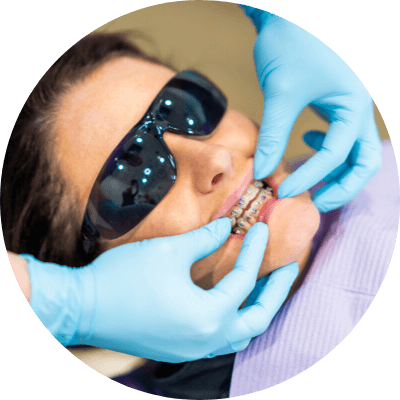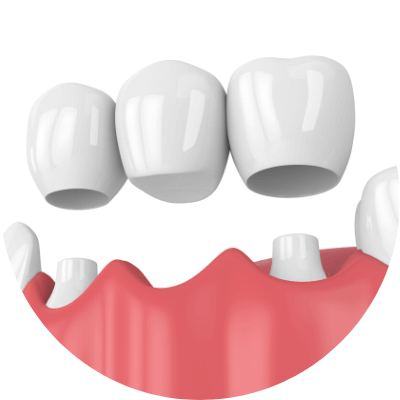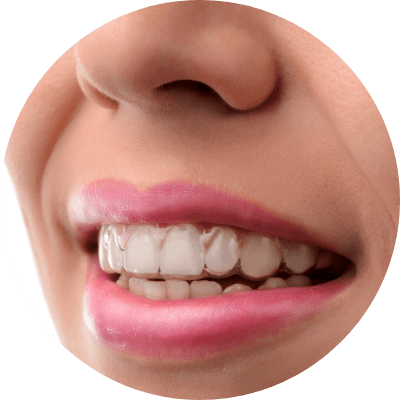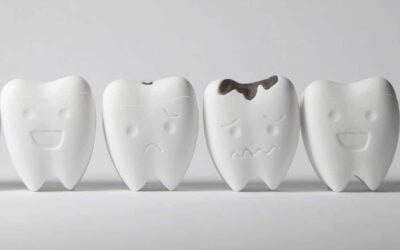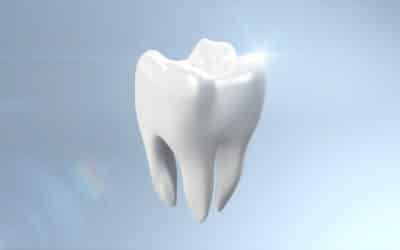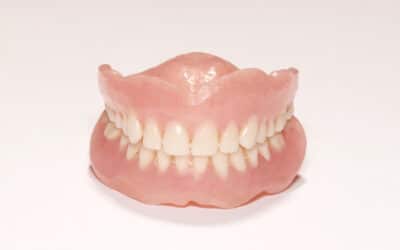Ceramic Braces: Ancient Origins, Bright Future!

Yes, for those who don’t know … Ceramics were the plastic of the ancient world. A material widely used to build and shape the vessels, which stored valuable consumables like grain, oil, and wine. Plus, of course, they formed the cups and plates, that those who could afford them, drank and ate off. Archaeologists spend lifetimes studying ceramic pottery shards to date and define civilisations from previous millennia. Dentists and orthodontists now employ ceramic braces to straighten our teeth in the 21C. It is wonderful how the wheel turns and modern ceramic technology can assist with dentistry in today’s world.
The field of orthodontics may seem like a modern invention, with popular orthodontic treatments such as braces almost a rite of passage in the modern world. But the history of orthodontics is, in fact, a long and fascinating one. Many ancient origins cultures developed surprisingly advanced methods for straightening and preserving the alignment of teeth.
What are Ceramic Braces?
Ceramic braces were first introduced in 1987. They’re made of aluminium oxide, which, in its most common natural form of corundum, is rated 9/10 on the Mohs scale of mineral hardness, just under diamonds.
The brackets of braces are glued to the surfaces of the patient’s teeth. Brackets can be made of stainless steel, ceramic, or other materials. An archwire controls the movement of the teeth and connects the brackets and the bands.
Ceramic braces are a popular choice because they’re less noticeable than metal braces. But they do have some disadvantages, which is why some people may choose to go with a combination of ceramic and metal braces.
Ancient Cultures That Used Braces For Teeth
Healthy teeth and an attractive smile have long been considered to be desirable. Many ancient societies used a crude form of braces to align crooked teeth in the living or preserve straight teeth in death and the all-important afterlife. Common materials used for braces in the ancient world included gold, metal, and/or catgut. Throughout history, the materials used for braces evolved to include platinum, silver, steel, wood, ivory, copper, and brass.
Ceramic Braces: Benefits
Ceramic brackets can be clear or tooth-coloured. They come in different shades of off-white that can be customised to match your teeth. The archwires that connect the brackets are also available in less obvious shades like white. This makes ceramic braces less visible than metal ones.
An allergy to the nickel used in dental appliances like braces is the most common allergic reaction seen in dental practices. This leads to nickel-related contact dermatitis. Several types of metallic alloys are used in orthodontics, and most of these include nickel. For instance, stainless steel alloys can contain about 8% nickel.
A small study on 20 teens found that those who had ceramic braces had significantly less long-term plaque accumulation on their teeth and brackets than those with metal braces. Plaque is the sticky colourless film that builds up on your teeth and contains bacteria. But there is contradictory evidence on this, as some studies have found no difference in plaque accumulation between the two types of braces, while one study found that metal braces had less plaque accumulation. More studies need to be carried out.
Metal braces can interfere with magnetic resonance imaging (MRI) scans of the head and neck areas and need to be removed before testing. Ceramic braces are MRI-safe and don’t have to be removed. But if the ceramic brackets have any metal parts, like stainless steel slots, they may have to be removed before any imaging scans.
Ceramic braces are like conventional metal braces and can be used for various complex dental treatments. Invisible aligners, such as Invisalign and other brands, have some limitations and are more for those who have minor spacing problems.

Why Choose Ceramic Braces?
Ceramic braces are proving popular with adults who are getting their teeth and bite straightened. The aesthetic appearance of ceramic braces are less obtrusive due to the natural colouring blending with the teeth. These braces still employ archwiring to move your teeth into line but the overall effect is less noticeable than metal braces. Ceramic braces aren’t as durable as metal braces, they do break more easily. The treatment period is usually longer than that of metal braces by around 6 months to a year. Some people have preferred them on the basis of having less metal in your mouth, especially for those with sensitivities in this area.
Ceramics in Dentistry
Ceramics are extensively used in modern dentistry in the making of crowns, bridges, and veneers. In fact, a special kind of ceramics, called porcelain, is utilised in dental procedures. Thus, this material has proven to be compatible with our biology over many decades. The qualities of ceramics like porcelain with its insolubility and hardness make it ideal for dental fittings. Plus, the cosmetic appearance and feel of ceramics make them a close match to actual teeth. Ceramics in dental technology has moulded an ancient material into something ideally suited to a bright future.
Things To Consider About Ceramic Braces
Ceramic braces are more expensive than metal braces. Usually, around $1000 more, but depending on your particular requirements this can be more or less. You will, in most cases, need to wear these braces for longer than if you chose metal braces. Ceramic braces are larger than their metal counterparts. This can make brushing and cleaning them a more onerous task. These braces can break more easily and may need to be replaced more often. The elastic around ceramic braces can stain permanently and you need to avoid certain foods and drinks if you want to prevent this happening. If you use your mouth a lot via singing or public speaking or play contact sport these braces may not best serve you in terms of their durability.
Chemical Analysis of Porcelain in Dentistry
Traditionally, whiteware porcelain is composed of fired feldspar, clay, and quartz. Dental porcelain has, since 1965, featured fired alumina/glass composites to build up an inner core. This core contains “a high proportion of crystalline alumina (45-50%) embedded in a glass matrix surrounded by a transparent veneer.” (DW Jones, Some properties of dental ceramics, 1975) Dental technologies have had great success in creating a material ideally suited to replace teeth in a harmoniously biocompatible way.
Conclusion
Not only are ceramic braces incredibly inconspicuous and easy to wear, but the ceramic realignment appliances of today are also surprisingly durable and stain-resistant. As a raw material, metal is slightly tougher than ceramic, but ceramic braces have had their application and design enhanced throughout the years to ensure optimum resilience. Advances in orthodontic technologies have also allowed for the production of totally clear ceramic braces that are way less prone to discolouration than the slightly darker and more permeable designs of the past.
Marrying the old and natural with new applications to serve humanity in some of our more sensitive places. This is a great example of how dentistry is serving humanity via the wonderful realm of dental technologies.
Note: All content and media on the Sunbury Dental House website and social media channels are created and published online for informational purposes only. It is not intended to be a substitute for professional medical advice and should not be relied on as health or personal advice.
Services Mentioned
Related Articles
What’s New In Tooth Decay? Another Bacteria, That’s What
Four is quite a significant number to us humans. We like it. We live by it. The Chaldeans of Babylon loved it for their system of terrestrial and meteorological phenomena that told an astrological future encompassing earth, water, air and fire. Aristotle ascribed...
What’s With Teeth Terms? Mulberry Molars? Flux? Butterfly? Cauliflower? Tombstone?
It’s often supposed that the roots of English are predominantly Greek and Latin. Understandably so. Words are assimilated into the language from other dialects as well, like French and Arabic. From the approximately 170,000 English words currently in use,...
Your Tooth Bone’s Connected To Your Knee Bone …
Dem bones dem bones dem dry bones … 1928 marked the first recording of that spiritual song, written by two African-American brothers James Walden and J. Rosomond Johnson. Born in 1871, James Walden Johnson was a skilled writer, distinguished lawyer, diplomat and civil...
What If You Could 3-D Print Dentures?
3-D printing is taking the world by storm. What if you could 3-D print dentures? Well, you can, and clever people are already doing it. In 2021, an article in a leading Perth newspaper featured a story on this very topic and claimed a local dentist as the sole...


